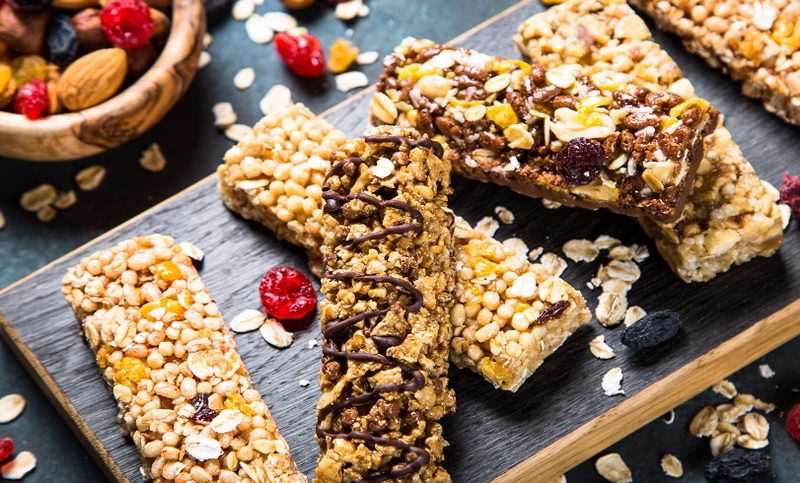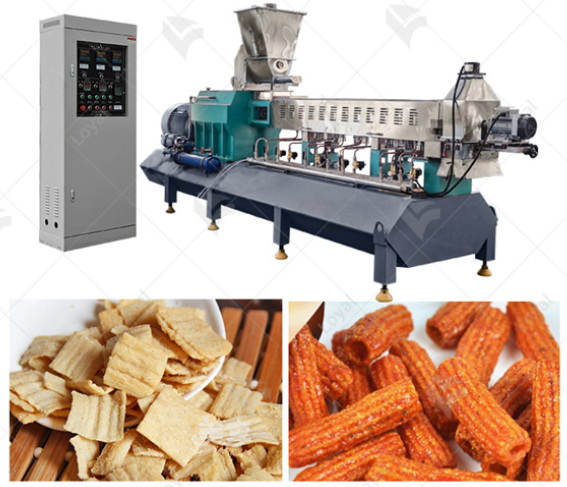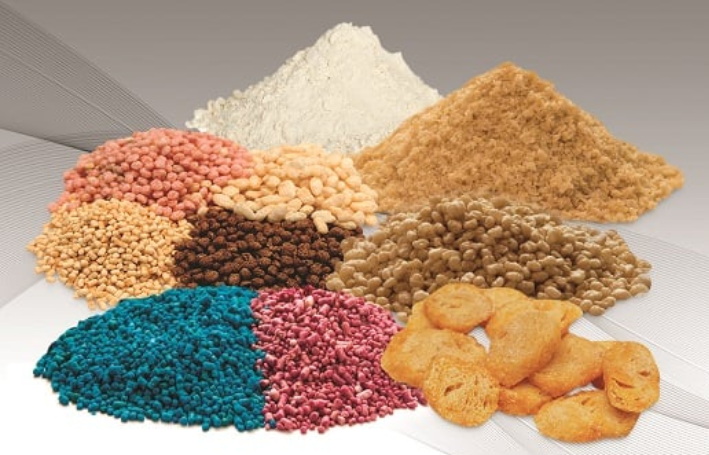Content Menu
● Understanding Extrusion Food Bar Production
● Key Factors Influencing Extrusion Food Bar Production
>> 1. Ingredient Selection
>> 2. Moisture Control
>> 3. Temperature and Pressure Management
>> 4. Screw Design and Speed
>> 5. Die Configuration
● Process Optimization Strategies
>> 1. Regular Maintenance of Equipment
>> 2. Real-Time Monitoring Systems
>> 3. Data Collection and Analysis
>> 4. Training and Development
● Scientific Innovations in Extrusion Technology
● Case Studies: Successful Optimization Examples
● Challenges in Extrusion Food Bar Production
● Conclusion
● FAQ
>> 1. What types of ingredients are best for extrusion food bars?
>> 2. How does moisture content affect extrusion?
>> 3. Why is screw design important in extrusion?
>> 4. What role does temperature play in extrusion?
>> 5. How can companies reduce downtime during production?
● Citations:
The production of extrusion food bars has gained significant traction in the food industry due to its efficiency and versatility. This article explores various strategies to optimize the extrusion process, enhancing productivity while maintaining high-quality standards.

Understanding Extrusion Food Bar Production
Extrusion is a continuous process that involves forcing a mixture of ingredients through a die to create specific shapes and textures. The process typically includes several stages:
- Ingredient Preparation: Raw materials such as grains, sugars, nuts, and binders are mixed into a dough-like consistency.
- Extrusion: The mixture is forced through a die under high pressure and temperature, shaping it into bars.
- Cooling and Drying: Once extruded, the bars are cooled and dried to achieve the desired moisture content and texture.
Key Factors Influencing Extrusion Food Bar Production
To optimize the production of extrusion food bars, several factors must be considered:
1. Ingredient Selection
Choosing high-quality ingredients is crucial for producing superior food bars. The selection should focus on:
- Nutritional content
- Flavor profiles
- Texture attributes
Using premium ingredients can significantly enhance the final product's taste and nutritional value. For instance, incorporating whole grains can improve fiber content, while natural sweeteners can enhance flavor without adding excessive sugar.
2. Moisture Control
Moisture content plays a vital role in the extrusion process. Proper pre-conditioning of ingredients to achieve an optimal moisture level (typically around 18%-20%) ensures uniform consistency in the dough, which is essential for efficient extrusion. This phase allows water to act as a plasticizing agent, softening the mixture and facilitating smoother processing.
3. Temperature and Pressure Management
The extrusion process requires precise control over temperature and pressure to achieve the desired product characteristics. Key parameters include:
- Temperature: Maintaining the right temperature (usually between 130°C to 200°C) is critical for starch gelatinization and protein denaturation.
- Pressure: The pressure within the extruder should be monitored closely to prevent blockages and ensure smooth operation. High pressure not only aids in shaping but also influences the texture of the final product.
4. Screw Design and Speed
The design of the extruder screw significantly impacts mixing efficiency and product texture.
- Screw Type: Twin-screw extruders offer better mixing capabilities compared to single-screw designs, allowing for more complex formulations.
- Speed Control: Adjusting the screw speed can influence the shear rate, affecting the expansion and texture of the extrudate. Higher speeds may lead to more expansion but could compromise texture if not managed properly.
5. Die Configuration
The die shape and size directly affect the final product's appearance and texture. Customizing die designs can help achieve specific shapes or textures desired in food bars. For example, using a die with multiple openings can produce bars with varied textures or cross-sections.

Process Optimization Strategies
To maximize efficiency in extrusion food bar production, consider implementing the following strategies:
1. Regular Maintenance of Equipment
Routine maintenance checks on extruders and related equipment can prevent unexpected breakdowns, ensuring consistent production output. This includes:
- Cleaning to avoid contamination
- Calibration checks to maintain operational parameters
Proper maintenance not only extends equipment life but also enhances production efficiency by minimizing downtime.
2. Real-Time Monitoring Systems
Incorporating advanced sensors for inline quality control allows for immediate detection of deviations from product standards. This enables rapid adjustments to maintain quality while minimizing waste. Key metrics to monitor include:
- Melt temperature
- Melt pressure
- Screw speed
- Heating zone temperatures
These metrics provide insights into operational efficiency and product quality.
3. Data Collection and Analysis
Collecting data on production parameters (temperature, pressure, moisture content) can help identify trends and areas for improvement in the process. Analyzing this data allows manufacturers to make informed decisions about adjustments needed for optimal performance.
4. Training and Development
Investing in ongoing training for staff involved in extrusion processes can enhance their understanding of equipment operation and troubleshooting techniques, leading to improved efficiency. A well-trained workforce can quickly identify issues before they escalate into significant problems.
Scientific Innovations in Extrusion Technology
Recent advancements in extrusion technology have significantly improved production capabilities:
- Co-extrusion Techniques: This method allows manufacturers to create multi-layered products with different textures or flavors by simultaneously extruding multiple mixtures through separate channels in a single die.
- Low-Pressure Extruders: These machines operate at lower pressures, preserving nutritional content while allowing for greater ingredient variability without compromising flavor or texture.
- Energy Efficiency Improvements: Innovations in machinery design have led to reduced energy consumption during production processes without sacrificing output quality or speed.
Case Studies: Successful Optimization Examples
1. Company A implemented a new twin-screw extruder that allowed them to experiment with different ingredient blends while maintaining consistent quality across batches.
2. Company B focused on real-time monitoring systems that enabled them to adjust extrusion parameters dynamically, resulting in reduced waste and improved product consistency.
3. Company C enhanced their maintenance schedule, leading to a notable decrease in downtime and increased overall productivity.
Challenges in Extrusion Food Bar Production
Despite its many advantages, extrusion food bar production does face challenges:
- Ingredient Variability: Fluctuations in raw material quality can impact final product consistency.
- Equipment Limitations: Older machinery may not support advanced monitoring technologies or co-extrusion techniques.
- Market Trends: Rapid changes in consumer preferences necessitate quick adaptations in product formulations and processing methods.
Conclusion
Optimizing extrusion food bar production involves a multifaceted approach that includes ingredient selection, moisture control, temperature management, equipment maintenance, real-time monitoring, scientific innovations, and staff training. By focusing on these areas, manufacturers can significantly enhance their production efficiency while ensuring high-quality output that meets consumer demands.

FAQ
1. What types of ingredients are best for extrusion food bars?
High-quality grains, sugars, nuts, and binding agents like syrups or fats are ideal for creating nutritious and flavorful food bars.
2. How does moisture content affect extrusion?
Optimal moisture levels (around 18%-20%) ensure uniform consistency in dough, which is essential for smooth extrusion processes.
3. Why is screw design important in extrusion?
The design of the extruder screw affects mixing efficiency and product texture; twin-screw designs offer superior capabilities compared to single-screw designs.
4. What role does temperature play in extrusion?
Temperature management is critical for achieving starch gelatinization and protein denaturation during the extrusion process.
5. How can companies reduce downtime during production?
Implementing regular maintenance schedules and real-time monitoring systems can help minimize unexpected breakdowns and maintain consistent production output.
Citations:
[1] https://barillion.com/blog/the-science-behind-snack-bar-production/
[2] https://loyal-machine.com/blog/snack-food-extruder-machine/
[3] https://www.eagleextruder.com/blog/how-can-corn-cheese-ball-snacks-factories-optimize-their-extruder-lines-for-maximum-efficiency.html
[4] https://www.ift.org/~/media/food%20technology/pdf/2017/07/0717_col_processing.pdf
[5] https://oden.io/blog/extrusion-best-practices-tips-and-tricks-from-industry-experts/
[6] https://loyalmachines.com/blog/the-manufacturing-process-of-extruded-food-products/
[7] https://medcraveonline.com/MOJFPT/applications-of-food-extrusion-technology.html
[8] https://www.dlg.org/fileadmin/downloads/Expertenwissen/lebensmitteltechnologie/e_2022_2_Expertenwissen_Extruder_EN.pdf
[9] https://pmc.ncbi.nlm.nih.gov/articles/PMC10376774/
[10] https://loyal-machine.com/blog/extrusion-snacks/
[11] https://www.reddit.com/r/foodscience/comments/1e40veq/extrusion_of_protein_bars/
[12] https://www.researchgate.net/publication/382946563_Extrusion_Technology_Transforming_Food_Processing
[13] https://www.researchgate.net/publication/343357714_Food_safety_in_extrusion_processing
[14] https://foodbeverageasia.com/co-extrusion-system-enhancements-to-improve-control-and-performance/






















